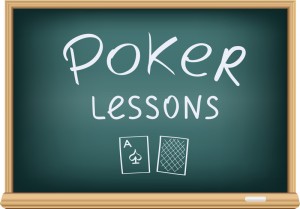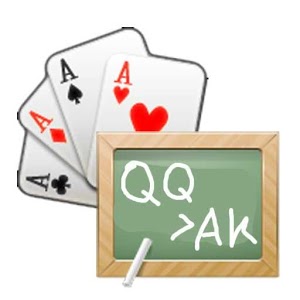Turbos have taken off lately due to their reputation as a quick and exciting way to play tournament poker. In this two-part article, I’ll explain how to adapt your game as you move through the blind levels of a Turbo SNG. The first part will explore early and middle play, and the second part will focus on bubble and heads-up play. My SNG of choice is the Stars NL 2-Table Turbo, so the blind levels illustrated below directly correspond to it.
Early (10/20 & 15/30 & 25/50)
Early on, play is driven by the cards you pick up. You should be betting for value (not bluffing), as the table will play pretty loose. I’m not a fan of playing super tight in the first few levels, because a lot of the loose players will throw their chips away and you want to be getting your share.
Here, your implied odds are at their highest, so play speculative hands in position or even out of position if their table is loose/passive pre-flop. You should be looking to hit the flop cheaply and try to double through with a big hand. This isn’t an excuse to play A4s and K9o from early position! Try and get in to see some cheap flops with low pocket pairs and suited connectors…the more limpers the better. You’ll find a lot of players getting too attached to top pair hands early on, so make sure you’re not putting too much of your stack at risk with just a pair.
Although I like to loosen up early on, it’s important to be patient. If the situations aren’t favorable, be sure to keep your cool and fold, fold, fold. If you fritter away too much, then you won’t get maximum value when you do double through!
Since play is so loose early on, it’s best to play big hands fast. Don’t be afraid of scaring off action. If your opponents are loose, then make your raises bigger than the standard 3xBB raise to gain the extra value available.
(50/100 & 75/150)
The maniacs are dying off and your implied odds are getting lower. Cut down on speculative hands unless the situation is really favorable. Look for middle/high pairs and big cards and play them more aggressively.
You don’t have as much space for maneuvering post-flop at this point. Continuation bets (bluffing on the flop after raising pre-flop) are more likely to take down pots. Be careful when continuation betting, don’t c-bet into three or more players unless you’re certain they’re weak.
(100/200 & 100/200+antes)
The stacks at the table are now much lower in relation to the blinds. Stealing becomes a big part of your game, with a lot of the pots being taken down before the flop. At Stars, antes provide a lot of extra money in the pot. When the antes kick in it’s time to get aggressive.
It’s important at this stage to make sure you’ve categorized each of the players at your table (loose/tight, aggressive/passive, etc.). Pick on the tight medium-stacked players. They’ll generally tighten up even more as the blinds increase, as they’ll be worried about busting out. Try to stay away from the bigger stacks, as they have the ability to eliminate you from the tournament. You should be aiming to steal the blinds at least once per orbit.
When you steal it’s very important to be first into the pot, but also look out for weak players that limp-in then fold to raises. When you raise over the top of a limper other players will give more respect than usual, and you’ll pick up extra chips from the weak limper.
It’s important to be wary of pot committing yourself in the wrong situation. You want to push people around, but you don’t want to pot commit yourself with marginal hands. Here’s an example:
You’re eight-handed and the blinds are 100/200. The BB has 1700. You’re in the SB with 2000. It’s folded around to you with Q9o. You raise to 600…
(Your raise was a fine play if you’re deep-stacked, but when short-stacked you need to be very careful not to pot commit yourself in a situation where you don’t need to, and could come off pretty badly as a result.)
…the BB pushes all of his chips in. Now it’s costing you 1,100 to call into a 2,300 pot and see the hand out to the end. You’re now in a very bad spot, having to commit almost your entire stack in a hand that you’re likely behind in.
There’s a simple rule you should have followed here: when a raise will pot commit you (when you’re raising over 35% of your or your opponent’s stack), you should be shoving all of your chips in the middle. This not only gives you better fold equity (chance of making your opponent fold), but it takes away the chance of you making a weak fold when your opponent re-raises. Either shove your chips in, or don’t pot commit yourself. Make a smaller bet that you can still get away from if your opponent plays back.
Here we can see that Q9o really isn’t strong enough to risk over half of your stack when you’re still in pretty good shape, so you should just limp instead. You’re better off taking a stab at the pot on the flop or turn, when a bet won’t commit you with a weak hand.
Submit your review | |











